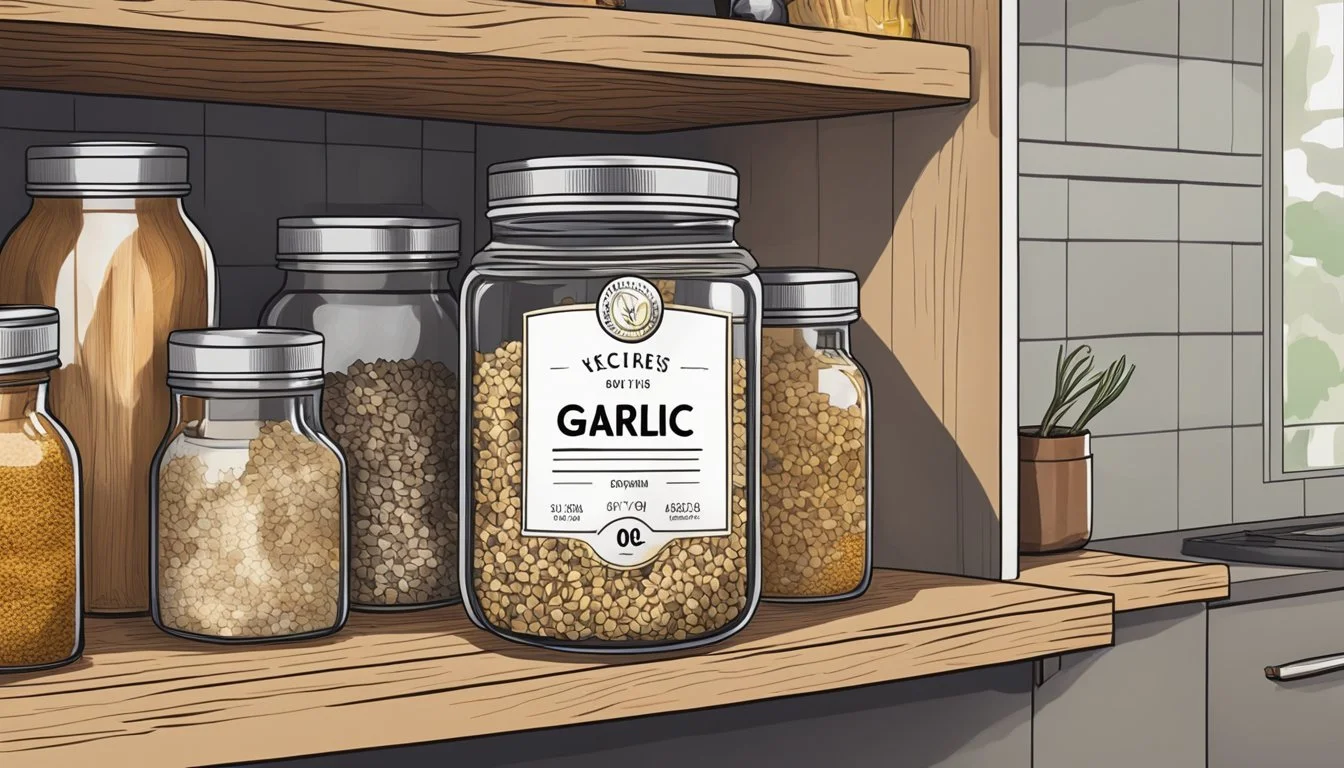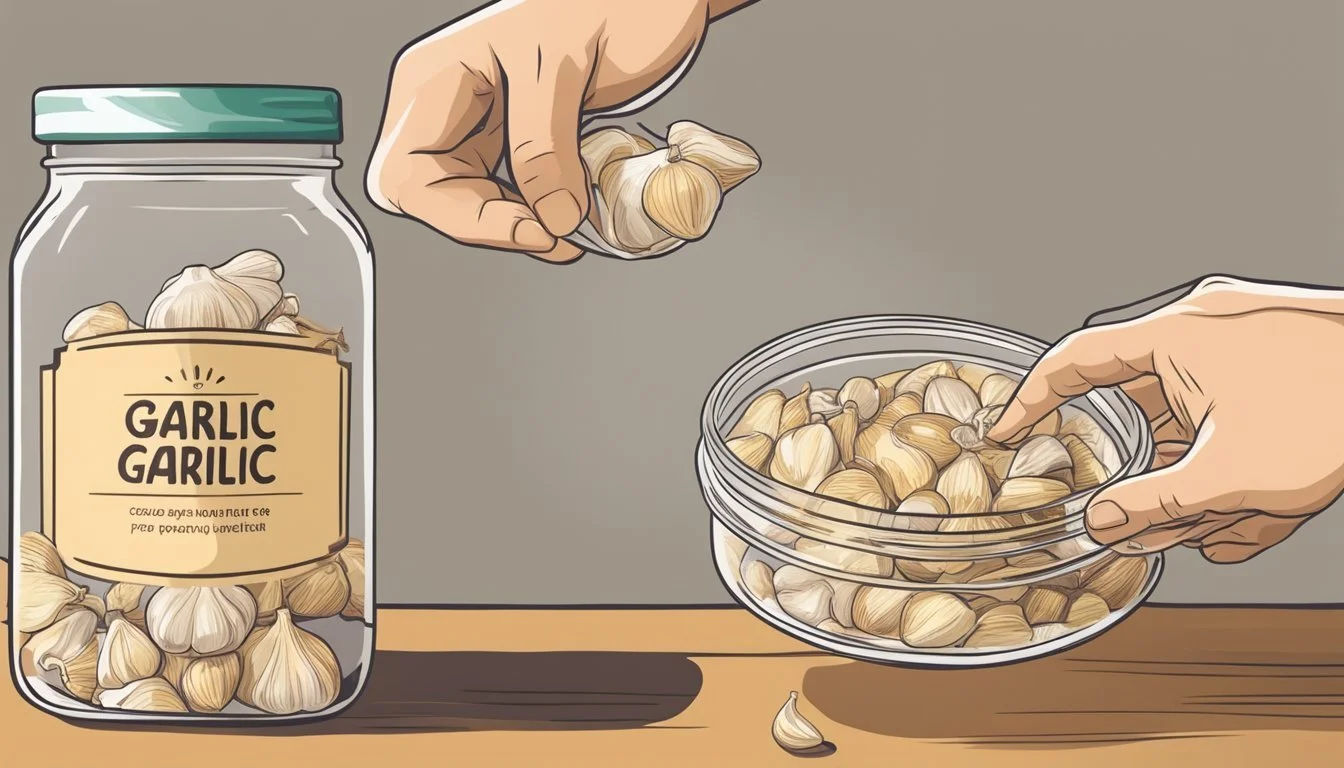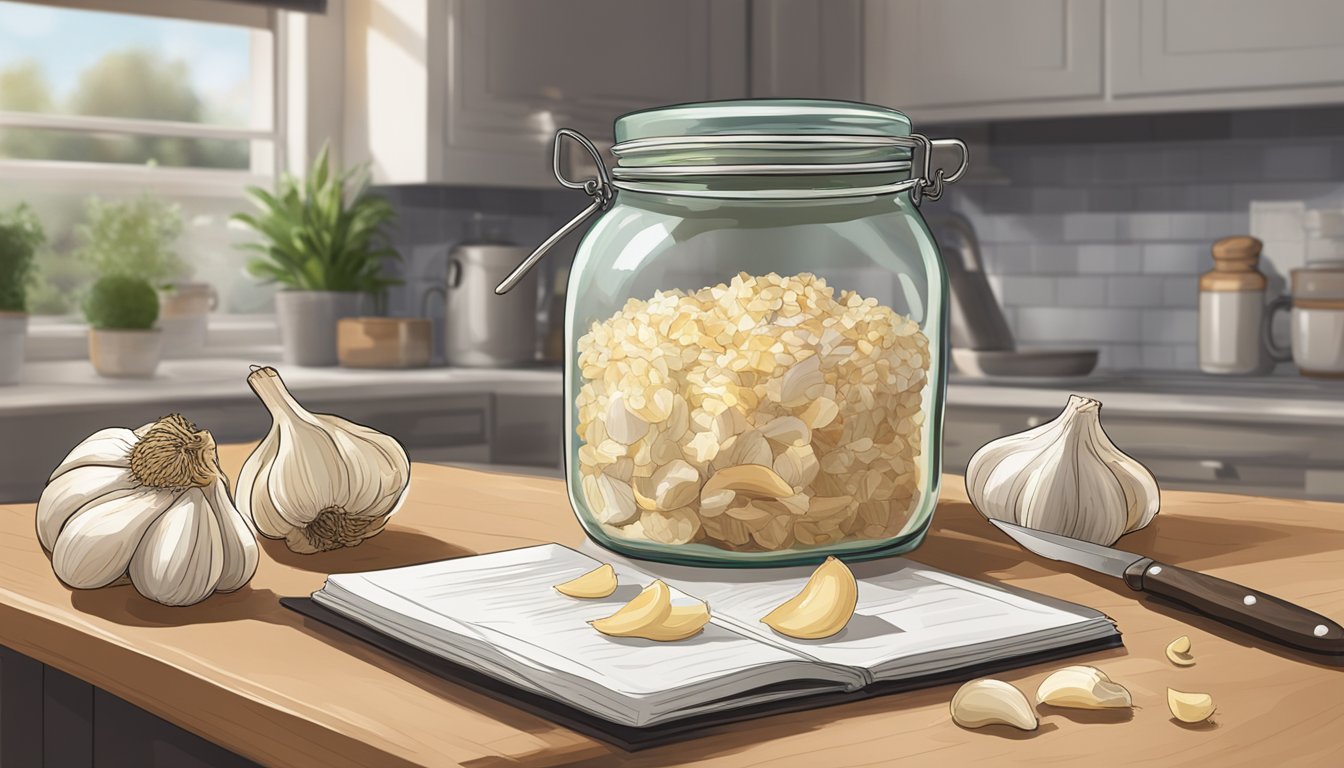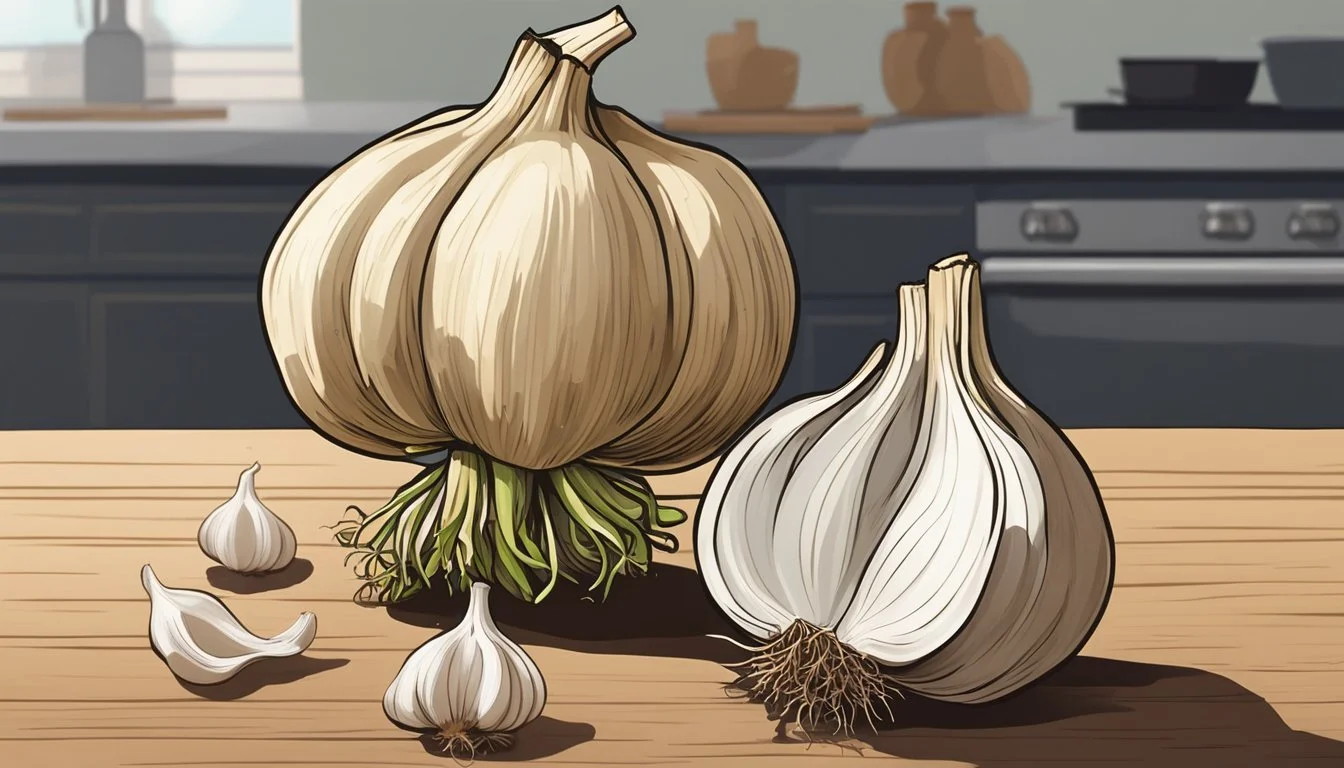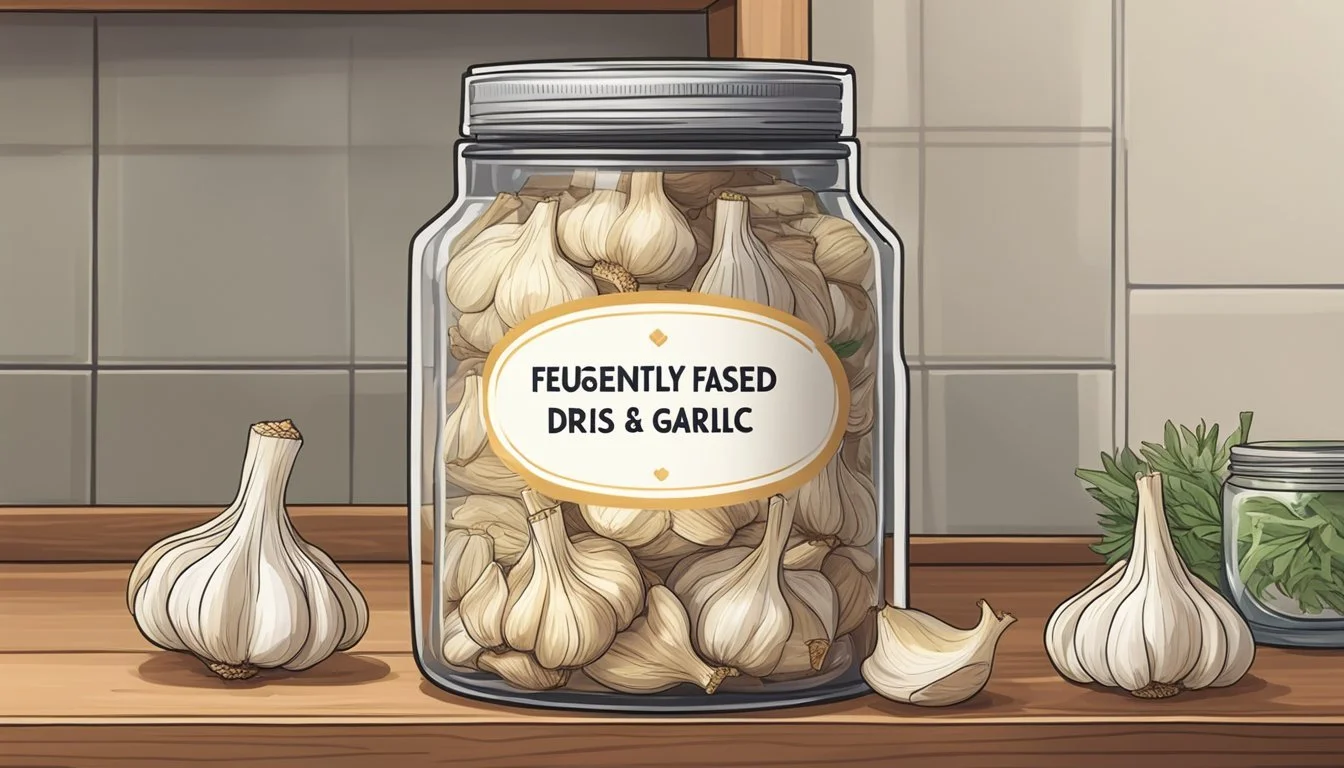How Long Does Dried Garlic Last?
Unveiling Its Shelf Life and Preservation Tips
Dried minced garlic (What wine goes well with garlic?) is a culinary convenience with an impressive shelf life, allowing chefs and home cooks alike to infuse their dishes with garlic's distinctive aroma and flavor long after fresh garlic would have spoiled. The longevity of dried garlic makes it a staple in pantries around the world. Its dehydrated form is less prone to bacterial growth and spoilage, ensuring its vital place in the seasoning arsenal.
The expected shelf life of dried minced garlic hinges on various factors, including storage conditions and packaging. Typically, when stored properly in a cool, dry place away from sunlight, dried garlic can maintain its quality for up to two to three years. In optimal conditions, it retains its potency and prevents clumping, thereby offering a ready-to-use ingredient for a wide array of recipes.
Signs that dried garlic has surpassed its peak include loss of pungent aroma, dull flavor, or visible mold. These indicators suggest that the dried garlic may no longer enhance dishes as intended, and it might be time to replace it. Regular inspection and adherence to best storage practices are key to fully utilizing dried garlic's extensive shelf life.
Types and Characteristics of Garlic
Understanding the different varieties and freshness indicators of garlic is crucial for culinary applications and shelf-life estimation.
Identifying Different Garlic Varieties
Garlic (Allium sativum) can be broadly categorized into three main types: softneck, hardneck, and elephant garlic. Softneck garlic is known for its flexible stalk and is commonly found in supermarkets due to its long shelf life and ease of cultivation. These are usually what one finds braided in traditional garlic ropes.
Softneck Varieties:
Artichoke – bulbous with numerous cloves (how long do cloves last?)
Silverskin – tightly packed cloves suitable for long storage
Hardneck garlic has a rigid stalk and is generally more flavorful than softneck varieties, with the added bonus of producing edible scapes. Hardnecks are more sensitive to cold weather and have a shorter shelf life.
Hardneck Varieties:
Rocambole – known for their complex, rich flavor
Porcelain – large, robust cloves
Purple Stripe – distinctive purple streaks on the skin
Elephant garlic, despite its name, is not true garlic but a closer relative of the leek. It has a milder flavor and larger cloves, making it suitable for those who prefer a gentler taste.
Recognizing Freshness Indicators in Garlic
Assessing the freshness of a clove of garlic is imperative for quality and taste. Fresh garlic cloves should be firm to the touch and the skin should be dry and papery. The absence of sprouts emerging from the top of the clove often indicates better freshness. Visible mold or an off smell signals that the garlic is no longer fresh and should not be used.
Freshness Indicators:
Firmness: Cloves should be hard and dense.
Skin: Look for intact, flakey outer layers.
Color: Cloves should be free from dark spots or green shoots.
Aroma: Fresh garlic has a pungent, distinctive smell, not sour or musty.
Evaluating these characteristics carefully will ensure the selection of high-quality garlic and help determine the optimal use and storage methods.
Optimal Storage Conditions for Garlic
When storing garlic, maintaining proper temperature, humidity, and ensuring sufficient air circulation are crucial to preserving its freshness and extending its shelf life.
Temperature and Humidity Considerations
The ideal temperature range for storing garlic is between 56°F and 58°F (13°C to 14.5°C). Humidity levels should be maintained at 45% to 50%. These conditions prevent it from becoming soft and moldy, and help retain potency. Garlic should not be stored in the fridge, as the colder temperature can stimulate sprouting. Storing garlic in a dark place also helps prevent sprouting and preserve its flavor.
Air Circulation and Ventilation Requirements
Proper ventilation is key to storing garlic successfully. Garlic should be kept in a well-ventilated area to allow for air circulation, which minimizes moisture buildup. Storage options like plastic mesh bags or baskets are ideal as they facilitate airflow around the bulbs. It is important to avoid airtight containers for long-term storage, as they can trap moisture and promote decay. However, peeled or chopped garlic can be stored in an airtight container or freezer to prolong its shelf life.
Garlic Preservation Techniques
Proper preservation techniques are crucial to extend the shelf life of garlic. Some methods retain the garlic's flavor better than others, and specific procedures are favored for their convenience and effectiveness.
Drying and Dehydrating Garlic
One can preserve garlic through drying or dehydrating, which helps in maintaining its flavor for an extended period. Drying involves thinly slicing the garlic and placing it in a dry, well-ventilated area or using a dehydrator. The process can take several hours to days, and the ideal final product should be completely dry and brittle. Once dried, it should be stored in an airtight container away from light and moisture.
Freezing Methods for Garlic
Freezing is another method to preserve garlic. Individuals can freeze whole unpeeled cloves, peeled cloves, or minced garlic. For the best results when freezing peeled garlic, one can spread individual cloves on a baking sheet to freeze before transferring them to a container to prevent clumping. Using a zip-top bag or airtight container is effective to minimize freezer burn.
Garlic in Oil Preservation
Preserving garlic in olive oil is a method that infuses the oil with garlic flavor and preserves the cloves. To ensure safety, the garlic must be fully submerged in oil and stored in the refrigerator to prevent the growth of botulism bacteria. The mixture's shelf life is significantly shorter than other methods and should be used within a week. It's important to note that garlic in oil preservation should be done with caution due to the risk of botulism when not stored properly.
Shelf Life of Different Garlic Forms
The longevity of garlic is significantly influenced by its form and storage conditions. Comprehending these variables can ensure optimal freshness and flavor retention.
Whole Bulbs and Cloves
Whole Garlic Bulbs: A whole bulb of garlic, when stored in a pantry, can last from three to six months. It's vital to keep the bulbs in a dry and cool environment away from direct sunlight.
Unpeeled Cloves: Once a bulb is broken, and individual cloves are separated but unpeeled, they can remain fresh for about three weeks. The key to extending their shelf life is avoiding additional moisture and light.
Prepared Forms: Chopped, Minced, or Powdered
Chopped or Minced Garlic: Freshly chopped or minced garlic has a brief shelf life and should be used within 24 hours if kept at room temperature. It deteriorates quickly due to increased surface area exposed to air and moisture.
Dried Minced Garlic: When stored correctly in an airtight container, dried minced garlic can maintain its quality for up to two years, although using it within a year is recommended for peak flavor.
Garlic Powder: Garlic powder can be shelf-stable for up to three to four years under ideal conditions, such as in a dark, dry cabinet separate from heat sources.
If you can’t find these ingredients in your local markets, you can order dried minced garlic and garlic powder online!
Refrigerated vs. Room Temperature Storage
Peeled Garlic Cloves: If stored in the refrigerator, peeled garlic cloves have a considerably reduced shelf life and should be used within one week to maintain quality.
Whole Bulbs and Individual Peeled Cloves: Whole bulbs can last much longer when stored at room temperature compared to refrigeration, which may cause molding due to moisture. Individual peeled cloves benefit more from refrigeration but should still be consumed in a timely manner.
Minced Garlic: Whether in oil or dry form, refrigerated minced garlic can last for about two months when preserved correctly, such as in vinegar or wine to prevent spoilage.
The specific measures adopted for storing garlic in various forms play a crucial role in determining its shelf life. Keeping garlic away from moisture and light, whether it's whole, minced, or powdered, is universally essential for prolonging its usability.
Identifying Spoiled Garlic
When dried garlic begins to spoil, there are several unmistakable signs, involving visual and textural changes, odor and taste alterations, and the associated health risks of ingesting spoiled garlic.
Visual and Textural Changes
Spoiled dried garlic typically exhibits notable discoloration and textural changes. One should look for brown spots or areas where the once off-white color has turned yellow or dark. If the garlic clove feels soft to the touch rather than firm and dry, this is a clear indication that the garlic is no longer good. Additionally, the presence of mold, which may appear as fuzzy green sprouts or other types of growth, indicates that the garlic should be discarded.
Odor and Taste Alterations
Fresh dried garlic should have a characteristic pungent smell and a slightly spicy, acrid taste. If the garlic begins to emit a sour or bitter odor, this is a sign that it has started to spoil. The taste of spoiled garlic might also be off, losing its typical acrid flavor for a more sour or bitter taste. In such cases, it is advisable to discard the garlic to avoid consuming a compromised product.
Risks of Consuming Spoiled Garlic
Consuming spoiled dried garlic poses health risks, including foodborne illnesses. One of the severe risks involves botulism, a rare but potentially fatal illness caused by bacteria that can thrive in improperly stored garlic submerged in oil. Therefore, if there's any doubt regarding the garlic's quality, especially with any visual, textural or olfactory indicators present, it is safest to err on the side of caution and discard the questionable cloves.
Usage Tips and Cooking With Garlic
Garlic is versatile in the kitchen, whether one uses fresh cloves or dried forms like garlic powder, granules, or flakes. Maximizing garlic's potential in recipes requires understanding how to select, prepare, and substitute it to elevate dishes.
Selecting Garlic for Different Recipes
When choosing garlic for recipes, consider the form that will best suit the dish's flavor profile and the preparation method. For deep and robust flavors, whole garlic bulbs are ideal. They work well in slow-cooked dishes such as stews and roasts. For milder tastes, one might opt for single peeled garlic cloves to give a hint of flavor without overpowering other ingredients.
Fresh garlic is preferred for most recipes due to its aromatic and full-bodied flavor.
Dried garlic forms such as flakes or powder are great for an even distribution of flavor in spice rubs, dressings, or marinades.
Prepping Garlic for Cooking
Preparation of garlic can impact the intensity of its flavor in a dish. Here's how one can prep garlic:
Minced: For stronger flavor, mincing garlic into fine pieces is effective, especially in sautées and sauces.
Roasted: Whole bulbs can be roasted in a baking sheet at a moderate temperature to develop a softer, sweeter profile.
Sliced: Thinly slicing garlic is ideal for infusing oils, where a subtle aroma is needed without an overwhelming taste.
One should start with a peeled garlic clove and slice, mince, or crush it as required by their recipe.
Garlic as a Substitute in Dishes
Garlic can stand in for other aromatics and is often considered for its health benefits, although it should be used wisely to avoid a mismatch in flavor profiles.
In place of onions: Garlic can be used, but it should be noted that garlic has a more intense flavor, so one should adjust quantities accordingly.
For shallots or chives: These can be substituted with garlic, but do respectfully, particularly in dressings and as garnish, to not overpower the dish.
By incorporating these usage tips, garlic will not just be a seasoning but a transformative ingredient accorded the attention it deserves in cooking.
Garlic's Lifecycle and When It's Past Its Prime
Garlic, a staple in the onion family, has a remarkable self-preservation process, but it does not last indefinitely. Understanding at which point garlic is past its prime is essential for culinary use and to avoid any spoiling.
Understanding Garlic's Aging Process
Garlic bulbs are comprised of multiple cloves enveloped in a papery skin, which helps protect them from moisture and extends their shelf life. When stored properly in a cool, dry, and well-ventilated area, dried garlic bulbs can remain fresh and viable. Typically, a whole, unpeeled garlic bulb can last up to six months under these optimal conditions. The aging process accelerates once the protective layers are removed or once individual cloves are separated from the bulb.
Determining When Garlic Has Gone Bad
Identifying expired garlic involves checking for several indicators:
Texture: Garlic is past its prime when the cloves become soft to the touch rather than firm.
Moisture: Any signs of moisture, which could lead to mold, indicate that garlic is no longer good.
Color Changes: Cloves that begin to darken or develop brown spots have gone bad.
It is important to inspect garlic before use and discard any cloves if these signs are present.
The Impact of Sprouted Garlic
Sprouted garlic, indicated by the green shoots emerging from the top of the cloves, may still be used if the rest of the bulb is firm and free from soft spots. While sprouting can cause a slight bitterness and is often considered a sign of garlic past its prime, if the green sprouts are removed, the remaining clove can retain much of its flavor. Although the taste may not be as potent as fresh garlic, it does not pose any health risks. There is no need to discard the entire bulb due to minor sprouting unless the texture has become unpalatably soft or there is an overpowering unpleasant odor.
By paying attention to these specific changes in texture, appearance, and growth, one can ensure the garlic they use is not only safe for consumption but also retains the desired culinary properties.
Frequently Asked Questions
When it comes to storage longevity and best practices for garlic, several common questions arise. Addressing these ensures proper use and maximizes shelf life.
How Long Can You Store Garlic?
Dried minced garlic, when kept in an airtight container in a cool, dry place, can last for up to two years. For optimal flavor, it may be preferable to use it within one year.
Save time and effort by ordering airtight containers online!
Can You Eat Garlic That Has Sprouted?
Garlic that has developed green sprouts can still be consumed. The presence of sprouts indicates that the garlic is past its prime but not necessarily spoiled. For the best taste and texture, one should remove and discard the sprouts before use.
What Is the Best Way to Store Peeled Garlic Cloves?
For peeled garlic cloves, the following methods are suitable for up to three weeks of storage:
Refrigeration in a clear, sealed container.
Freezing the cloves on a baking sheet and then transferring them to a freezer bag.

